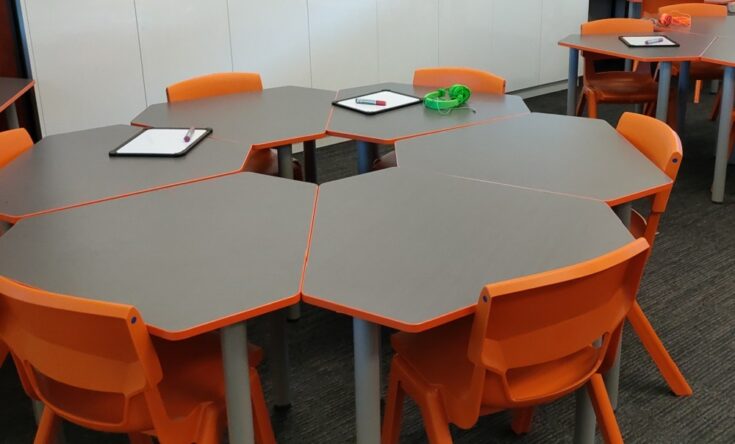If you’re a teacher or principal in a co-educational school take a moment to look at student enrolments for STEM subjects and participation in STEM-related clubs and extracurricular activities. Is there a gender imbalance?
A new report identifies best practices for the recruitment and retention of young girls and women in STEM and IT education, and shares global examples of effective interventions from primary, secondary and tertiary education settings.
In Championing girls and women in Information Technology: A review of the challenges, opportunities and initiatives, researchers from Monash University’s Faculty of IT say the underrepresentation of women in STEM/IT study and careers continues to be a major challenge around the world.
‘Despite decades of efforts to tackle this issue, progress has remained excruciatingly slow…Despite efforts to encourage more girls and women to pursue IT and STEM education and careers, the data continues to be disheartening.’
For example, they note that in Australia the enrolment rate in IT for women in 2019 was 19 per cent, and 18 per cent in Engineering and related technologies (Australian Department of Education, Skills and Employment, 2019).
Examples of effective interventions
The report explores some of the concerns about STEM/IT study and careers that affect girls’ decision making from as early as primary school. And Section 4 includes examples of best practice initiatives and interventions to improve representation and inclusion. ‘We pay particular attention to initiatives that focus on girls as there is existing evidence pointing out their greater influence on girls’ decisions as compared to mixed gender programs,’ the researchers explain.
They share details of initiatives targeting female school students and group them into three themes: promoting girls’ interest in computer science; introducing women role models; and, promoting gender-inclusive education.
‘Universities, as well as tech companies around the world, have launched a wide range of programs and initiatives aimed at dispelling the myths and stereotypes about computing careers, thereby promoting girls’ interest in studying computer science from an early age,’ the researchers say.
Programs grouped under this first theme include Miami University’s Girls on the Go – a residential summer program launched in 2012 where high school students were invited to work with computer scientists on projects such as creating an app for zookeepers, which boosted their skills and confidence. Students also had a chance to interact with female computer scientists in all kinds of fields – increasing their understanding of careers for computer scientists.
More recently, in 2018, the Graz University of Technology in Austria started its RemoteMentor project. Female students aged 14 and 15 used an app developed by the university called Pocket Code to bring their ideas to life through digital storyboards. This initiative ran during computer science and arts lessons (students chose famous paintings as the inspiration for animations and games) and included input from online mentors.
In Australia, the Go Girl, Go for IT event was launched back in 2000 and is still going strong. This technology conference featuring workshops, presentations and discussions, is for students in Years 5-12 and is aimed at encouraging female participation in ICT studies and careers. The event has been found to increase participants’ interest in ICT studies and future employment.
‘Drawing on research emphasising the importance of having positive women role models, many initiatives have focused on promoting these to young girls,’ the researchers write.
In the US, the University of Tampa introduced its Getting Everyone to Study Math and Related Technologies (GETSMART) initiative in 2008. Events for middle and high school students, and their parents, featured women IT academics, graduates and executives. ‘A survey conducted at the end of the initiative revealed their remarkable success,’ the report says.
‘Notably, 78 per cent of participants emphasised the importance of seeing female role models… Results from evaluative surveys and interviews were also provided to the industry executives and program sponsors to highlight the important role that models and mentors play for the participating girls.’
And the Digital Divas Club in Victoria, Australia, also included class visits by women IT professionals who shared their own experiences with secondary students, and spoke to them about their education and career pathway. The club was part of the Digital Divas Project – a partnership between three Australian universities and industry that aimed to change stereotypes about IT courses and careers.
The research report says this intervention also promoted gender-inclusive school education. ‘In order to dispel the stereotypically masculine and geeky image of IT and promote the social impacts of the discipline, the Digital Divas Club curriculum did not teach programming languages but rather focused on problem-solving aspects... Content was also designed in a way that promoted positive experiences regarding student self-efficacy and persistence with computing courses and career decisions.’
The researchers say although the review was undertaken to improve Monash University initiatives and strategies, the findings provide valuable insights for other education stakeholders.
References
Do, T., Le Bodic, P., Martin, C., & Strengers, Y. (2021). Championing girls and women in Information Technology: A review of challenges, opportunities and initiatives. Monash University.
What is the situation in your own school – is there a gender imbalance in STEM-related subjects? Why do you think this might be?
One of the successful programs mentioned in this research report ensured female role models featured heavily in events with students and their parents. When was the last time you invited a female role model to an event at your school? What opportunities are there to do this during the 2022 school year?



